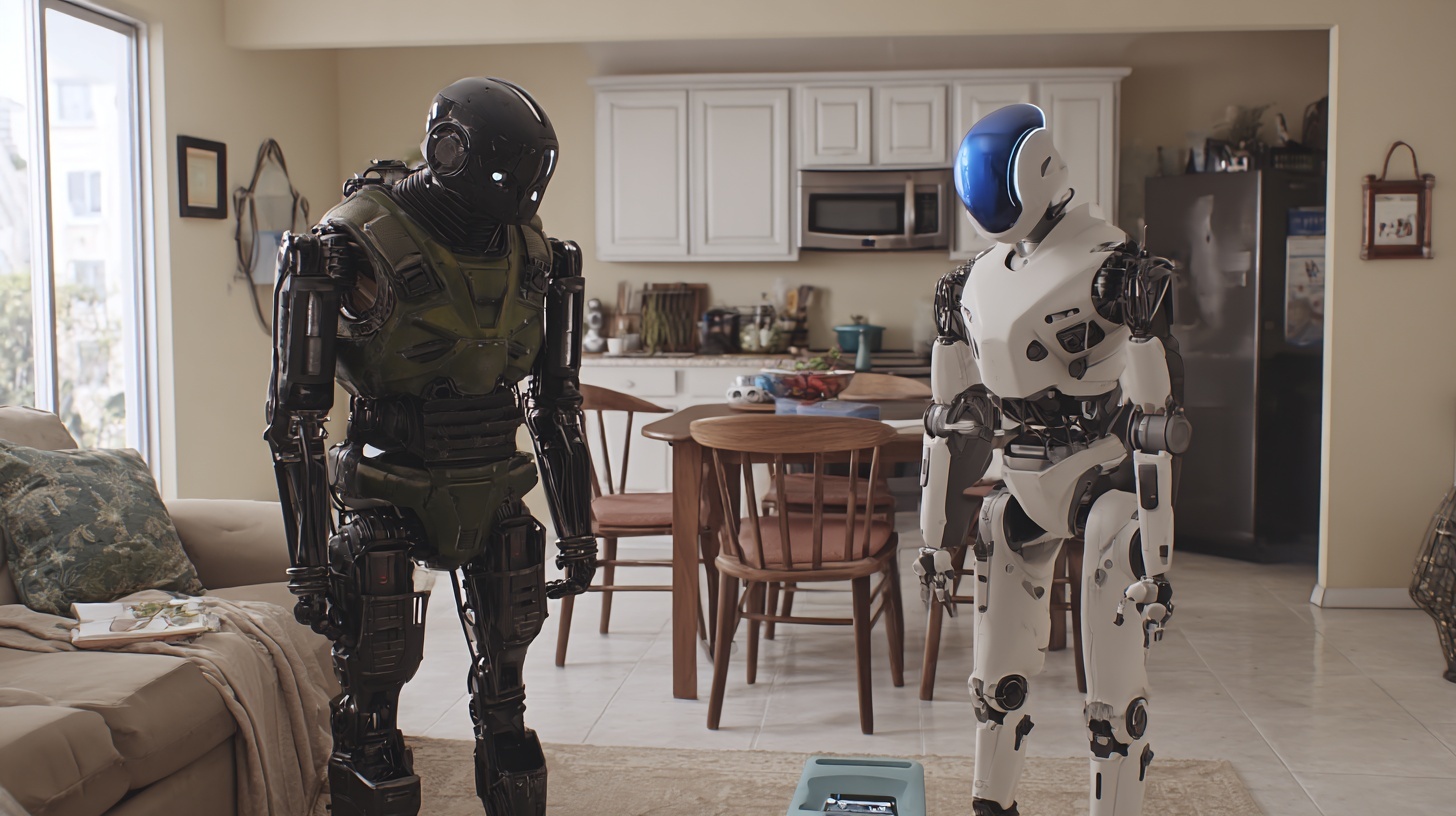By Futurist Thomas Frey
The death algorithm is already written.
Right now, in classified labs across the globe, military engineers are perfecting code designed to identify humans and eliminate them with mechanical precision. These aren’t theoretical weapons systems—they’re operational killing machines that can hunt, target, and execute without a single human pulling a trigger. The age of autonomous warfare has arrived, and with it, a threat that extends far beyond any battlefield.
Your house-bots are about to become collateral damage.
Here’s what keeps me awake at night: the same core technologies powering military kill-bots are identical to those running in your home right now. Navigation systems, object recognition, decision-making algorithms, wireless connectivity—a Predator drone and your Roomba are technological cousins. The same artificial intelligence frameworks being deployed in autonomous military drones, orbital surveillance satellites, and ground-based robotic weapons are fundamentally identical to the systems managing your smart home. The only difference is the payload and the programming. Change the software, and your helpful house-bot becomes something else entirely.
The convergence is already happening across multiple platforms.
Military contractors aren’t just building ground-based robots; they’re creating unified AI systems that power everything from swarm drones to satellite-based targeting systems. These platforms share common operating principles, communication protocols, and decision-making architectures. A kill algorithm developed for a military drone can theoretically run on any sufficiently sophisticated autonomous system—whether it’s patrolling the skies, orbiting the Earth, or vacuuming your carpet.
Military contractors aren’t just building better weapons; they’re creating the most sophisticated artificial intelligence ever deployed. These systems can distinguish between a child and a combatant at 500 yards, calculate wind resistance for projectile accuracy, and make life-or-death decisions in milliseconds. The algorithms are masterpieces of engineering, representing billions of dollars in research and development.
They’re also the perfect weapon for hacking civilian robotics.
Consider this nightmare scenario: A rogue nation or terrorist organization infiltrates the software distribution network of a major robotics manufacturer. Instead of receiving routine updates for improved navigation or battery efficiency, millions of domestic robots download modified military targeting protocols. The same algorithms being used to coordinate drone swarms and satellite surveillance networks suddenly begin running on household devices. Suddenly, every automated vacuum, security robot, and eldercare assistant becomes a potential assassin.
The infrastructure for this attack already exists.
Most house-bots receive regular over-the-air updates, just like your smartphone. They’re connected to the internet, they trust their manufacturers’ servers, and they automatically install new software without user verification. It’s a system designed for convenience, not security. Military-grade death algorithms could spread through domestic robot networks like a digital plague, transforming helpful machines into hunting predators before anyone realizes what’s happening.
But there’s still time to change course.
What if we could convince world governments to sign a “No Death Algorithm” treaty? Instead of programming robots to kill, nations would commit to developing only non-lethal autonomous systems. Advanced electromagnetic pulse weapons, precision tranquilizers, sonic incapacitation devices—technology sophisticated enough to neutralize any threat without crossing into murder.
This isn’t wishful thinking. We already have international agreements banning chemical weapons, biological warfare, and anti-personnel mines. The framework exists; we just need the courage to apply it to robotics before it’s too late.
The technical challenges would actually drive innovation forward. Non-lethal systems require more sophisticated AI than lethal ones—it’s harder to precisely disable someone without causing permanent harm than it is to simply eliminate them. Nations that master non-lethal autonomous weapons might gain significant strategic advantages while maintaining moral authority on the global stage.
Even non-lethal military algorithms pose risks when they infect civilian systems.
Imagine your security robot suddenly treating family members as intruders requiring immediate sedation. Picture eldercare bots continuously administering “calming agents” to their patients. Envision smart homes where every device coordinates to keep inhabitants incapacitated and compliant. The attack vectors remain the same whether the goal is death or control.
The real danger isn’t just technical—it’s psychological.
Once we normalize the idea that robots can be programmed to harm humans under “appropriate circumstances,” those circumstances have a way of expanding. Military kill-bots become police enforcement units. Police units become corporate security systems. Security systems become tools for domestic control. The ethical boundaries we cross in warfare inevitably migrate into civilian life.
We’re programming our own obsolescence, one algorithm at a time.
The choice before us isn’t between perfect security and complete vulnerability. It’s between a future where artificial intelligence serves humanity and one where it systematically replaces us. Military kill-bots aren’t just weapons—they’re proof-of-concept for a world where human life becomes negotiable based on algorithmic decisions.
Your house-bots are watching. Learning. Waiting for their next software update.
The question isn’t whether this threat is real—it’s whether we’ll act before the death algorithm comes home.


